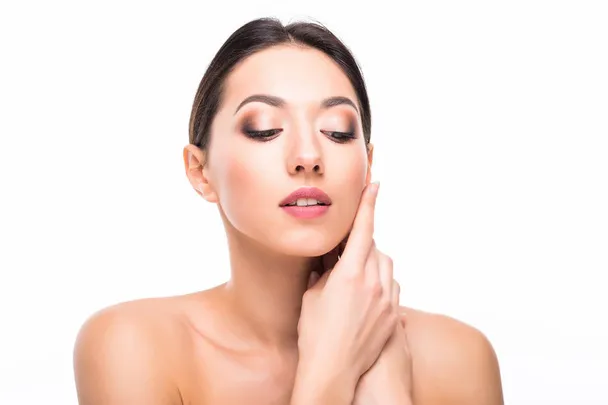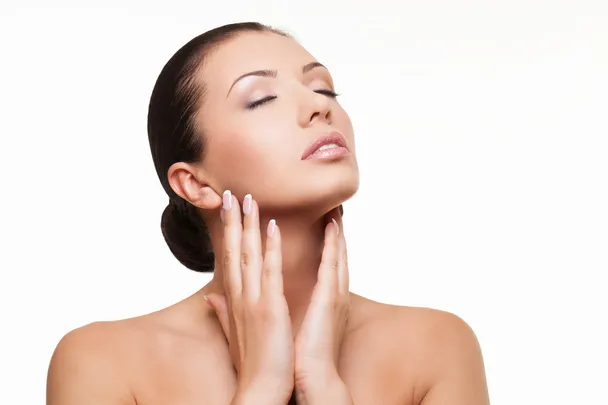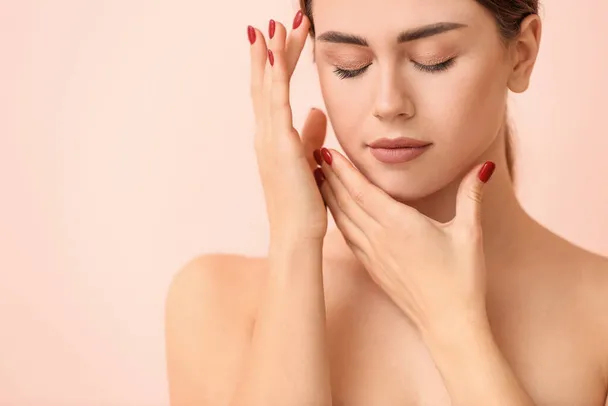Understanding Lip Discoloration:
Lip discoloration, characterized by changes in the color or pigmentation of the lips, can occur due to various factors, including lifestyle habits, medical conditions, and environmental influences. Understanding the causes of lip discoloration is essential for effective treatment and management.
Common Causes of Lip Discoloration:
- Sun Exposure: Prolonged exposure to the sun’s harmful UV rays can lead to darkening or discoloration of the lips, similar to sun-induced skin damage. The delicate skin of the lips, particularly the lower lip, lacks sufficient melanin, the pigment responsible for providing natural protection against UV radiation. As a result, the lips are more susceptible to sun damage, which can manifest as changes in pigmentation, dryness, and even sunburn. Over time, repeated sun exposure without adequate protection can lead to the development of dark spots, uneven skin tone, and premature aging of the lips.
- Smoking: Tobacco smoke contains a myriad of chemicals and toxins that can cause discoloration and damage to the lips over time. Smoking is a major risk factor for developing a condition known as smoker’s melanosis, characterized by the appearance of brown or grayish patches on the lips and gums. These discolorations occur due to the deposition of tar, nicotine, and other harmful substances present in tobacco smoke. Smoker’s melanosis not only affects the appearance of the lips but can also contribute to oral health issues such as gum disease and oral cancer.
- Dehydration: Chronic dehydration can have adverse effects on the lips, causing them to become dry, cracked, and discolored. The lips lack oil glands, making them more susceptible to moisture loss and dehydration. When the body is dehydrated, it prioritizes water distribution to vital organs, leading to a decrease in moisture levels in the skin, including the lips. As a result, the lips may appear dull, rough, and darker in color. Dehydration can exacerbate existing lip conditions such as chapping, peeling, and inflammation, making proper hydration essential for maintaining healthy and supple lips.
- Hyperpigmentation: Certain medical conditions, hormonal changes, and external factors can cause hyperpigmentation of the lips, resulting in the development of dark spots or patches. Melasma, for example, is a common skin condition characterized by the appearance of brown or grayish patches on sun-exposed areas of the skin, including the lips. Hormonal fluctuations during pregnancy or menopause, as well as the use of oral contraceptives, can trigger the overproduction of melanin, leading to increased pigmentation of the lips. Additionally, exposure to external factors such as pollution, allergens, and certain medications can contribute to the development of lip hyperpigmentation.
- Iron Deficiency Anemia: Anemia, a condition characterized by a deficiency of red blood cells or hemoglobin in the blood, can manifest as pale or bluish lips due to decreased oxygenation of the blood. Iron deficiency anemia, in particular, can lead to a condition known as pallor, characterized by a loss of natural lip color and a pale or whitish appearance of the lips. Iron is essential for the production of hemoglobin, which carries oxygen to the body’s tissues, including the lips. A lack of iron can result in reduced oxygen levels in the blood, leading to a noticeable change in lip color and overall skin tone.
Treatment and Management:
- Sun Protection: Protecting the lips from sun exposure is crucial for preventing further discoloration and damage. The thin skin of the lips is particularly vulnerable to UV radiation, which can lead to darkening or pigmentation issues. To shield the lips from harmful UV rays, it’s essential to use lip balms or lipsticks containing SPF (sun protection factor). Look for products with broad-spectrum protection to defend against both UVA and UVB rays. Reapply lip sunscreen regularly, especially after eating, drinking, or swimming. Additionally, wearing wide-brimmed hats or seeking shade during peak sun hours can provide additional protection and reduce sun exposure to the lips.
- Smoking Cessation: Quitting smoking is paramount for improving overall health and reducing the risk of lip discoloration associated with tobacco use. Tobacco smoke contains numerous harmful chemicals and toxins that can cause darkening or grayish patches on the lips and gums. Smoker’s melanosis is a common condition among smokers, characterized by the deposition of tar, nicotine, and other substances on the lips. Quitting smoking can help prevent further damage and may even reverse existing discoloration over time. Consult with a healthcare professional or enroll in smoking cessation programs for support and guidance in quitting smoking.
- Hydration: Maintaining proper hydration is vital for keeping the lips moisturized and healthy. Dehydration can exacerbate dryness, chapping, and discoloration of the lips, making it essential to drink an adequate amount of water throughout the day. Aim to consume at least eight glasses of water daily to replenish lost fluids and prevent dehydration. In addition to internal hydration, use hydrating lip balms or treatments containing ingredients such as hyaluronic acid, shea butter, or glycerin to nourish and protect the lips’ moisture barrier. Apply lip balm regularly, especially before bedtime, to seal in moisture and prevent moisture loss overnight.
- Topical Treatments: Topical treatments containing ingredients such as hydroquinone, kojic acid, or vitamin C can help lighten dark spots or hyperpigmentation on the lips. These ingredients work by inhibiting melanin production and promoting cell turnover, leading to a more even skin tone. Apply these treatments as directed by a dermatologist to target specific areas of discoloration and promote gradual lightening of the lips. It’s essential to use these treatments consistently and follow the recommended application guidelines to achieve optimal results. Keep in mind that some individuals may experience mild irritation or sensitivity to these ingredients, so perform a patch test before widespread use.
- Dietary Changes: Consuming a balanced diet rich in vitamins, minerals, and antioxidants can support overall skin health, including the lips. Incorporate foods high in iron, such as leafy greens, lean meats, poultry, fish, and legumes, to address iron deficiency anemia and improve lip coloration. Iron is essential for the production of hemoglobin, which carries oxygen to the body’s tissues, including the lips. Additionally, include foods rich in vitamin C, vitamin E, and beta-carotene to promote skin repair and protection against environmental damage. Fruits, vegetables, nuts, and seeds are excellent sources of these nutrients and can contribute to healthier, more radiant lips.
- Medical Intervention: In cases where lip discoloration is persistent, severe, or resistant to topical treatments, consult with a dermatologist or healthcare provider for further evaluation and treatment options. Medical interventions such as chemical peels, laser therapy, or prescription medications may be recommended to address underlying causes of lip discoloration effectively. Chemical peels containing alpha hydroxy acids (AHAs) or beta hydroxy acids (BHAs) can help exfoliate dead skin cells and promote skin renewal, resulting in a brighter, more even lip tone. Laser therapy, such as intense pulsed light (IPL) or fractional laser resurfacing, can target pigmentation issues and stimulate collagen production for smoother, more uniform lips. Your dermatologist can assess your specific concerns and develop a personalized treatment plan tailored to your needs and skin type.
Prevention Tips:
- Avoid Excessive Sun Exposure: Protecting your lips from the sun’s harmful UV rays is essential for preventing discoloration and damage. Limit your time in direct sunlight, especially during peak hours, and seek shade whenever possible. Additionally, use lip balms or lipsticks containing SPF (sun protection factor) to shield your lips from UV radiation. Reapply lip sunscreen regularly, especially after eating, drinking, or swimming.
- Stay Hydrated: Proper hydration is key to maintaining healthy, moisturized lips. Drink plenty of water throughout the day to prevent dehydration, which can lead to dryness, chapping, and discoloration. Additionally, use hydrating lip products such as lip balms or treatments containing ingredients like hyaluronic acid, shea butter, or glycerin to lock in moisture and protect your lips from environmental damage.
- Quit Smoking: Tobacco smoke contains numerous harmful chemicals and toxins that can cause darkening or grayish patches on the lips and gums. Quitting smoking is crucial for improving overall health and reducing the risk of tobacco-induced lip discoloration. Seek support from healthcare professionals, smoking cessation programs, or support groups to help you quit smoking successfully.
- Maintain a Balanced Diet: Consuming a balanced diet rich in iron and essential nutrients can support lip health and prevent anemia-related discoloration. Include foods high in iron, such as leafy greens, lean meats, poultry, fish, and legumes, in your diet to ensure an adequate intake of this vital mineral. Additionally, incorporate fruits, vegetables, nuts, and seeds rich in vitamins and antioxidants to promote skin health and prevent oxidative damage.
By following these prevention tips and incorporating healthy habits into your daily routine, you can help protect your lips from discoloration and maintain a vibrant, healthy appearance.
By understanding the underlying causes of lip discoloration and implementing preventive measures and appropriate treatments, individuals can effectively manage and improve the appearance of their lips for a healthier and more radiant smile. If lip discoloration persists despite home remedies or lifestyle changes, consult with a healthcare professional for personalized advice and medical intervention.










